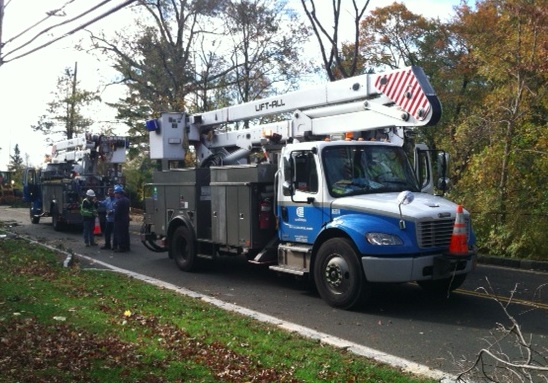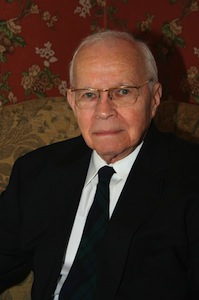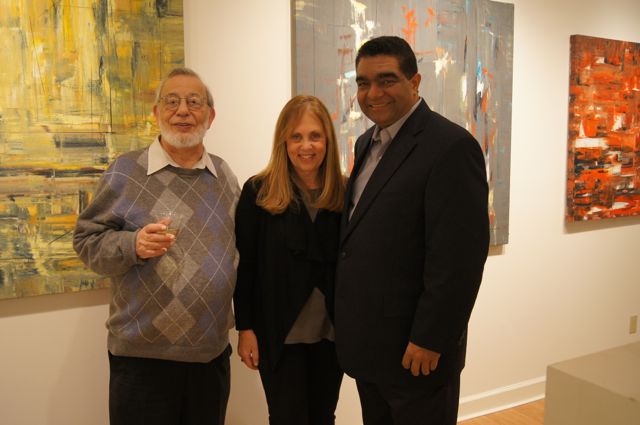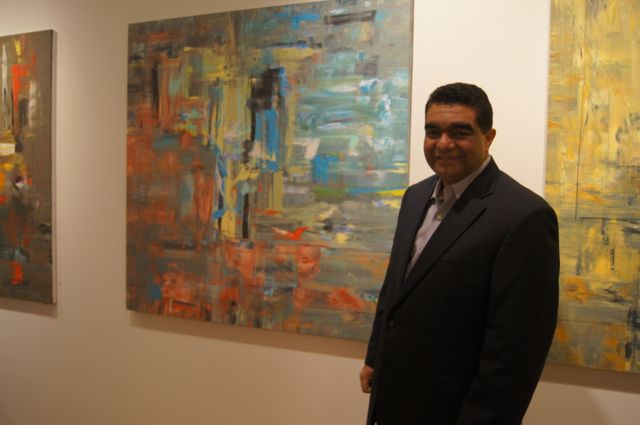Why Can't We Bury the Power Lines? A Q&A from the Scarsdale Village Board
- Details
- Hits: 9677
 In response to resident's queries about burying the power lines or seeking out alternative sources of power, the Village Board put together this informative Q&A to answer some of your most pressing questions. Read it and comment below – and if you have something controversial to say, please include your name and street address with your comment.
In response to resident's queries about burying the power lines or seeking out alternative sources of power, the Village Board put together this informative Q&A to answer some of your most pressing questions. Read it and comment below – and if you have something controversial to say, please include your name and street address with your comment.
A common comment after a storm such as Hurricane Sandy and the resultant power outages is that the power lines in the Village should be buried. Another frequent comment is that the Village should raise the money to bury the power lines. What follows in Q&A format are answers to these and related frequently asked questions. This material is not intended to be a definitive discussion of the subject but is provided with the goal of focusing on some of the issues and challenges that going forward with such a project would present.
Q: Why can't the Village bury the power lines?
A. The Village does not own the power lines. Con Ed does.
Q: Why can't the Village force Con Ed to bury the power line?
A. The Village does not have jurisdiction over Con Ed. Con Ed is subject to regulation by the New York State Public Service Commission ("PSC").
Q. Why can't the PSC force Con Ed to bury the power lines?
A. Theoretically such an order could be issued. However, such an order, if ever issued, would only be issued after appropriate hearings before the PSC in which Con Ed and other stakeholders (for example, customers, representatives of neighboring towns and the County) would appear and in which many factors, not the least of which would be the cost of such a project, would be considered. It is reasonable to expect that such a proceeding would take a considerable amount of time and among other things, if Con Ed were required to bury some or all of the power lines they would seek to pass the cost of such a project on to rate payers in the form of increases in electric rates.
Q. How much would it cost to bury the power lines in the Village?
A. In the past, Con Ed has estimated that it would cost approximately $1 million per mile to bury the power lines in the Village. Scarsdale has 91.33 miles of roads. Power lines are buried in some parts of the Village so assuming for discussion purposes that approximately 84 miles of power lines would have to buried, the cost might be in the range of approximately $84 million.
Q. During this period of low interest rates why doesn't the Village borrow the money to finance burying the power lines?
A. The power lines are not owned by the Village and so having the Village borrow the money to bury them would not make sense.
Q. So how could the cost of burying power lines be financed?
A. The logical means for financing such a project would be to have Con Ed fund it. As noted above, it would be expected that Con Ed would seek to recoup the cost of such a project through an increase of electric rates. So, ultimately the project would be funded by Con Ed customers.
Q. Can't we just change electric utilities and replace Con Ed with another provider?
A. While there are other authorized service providers selling electricity to Scarsdale customers (their names can be found on the PSC web site and in the frequent mail solicitations we all receive), the lines over which the electricity flows are still owned by Con Ed. Therefore, even though individual customers can change vendors, we would still have to deal with Con Ed on the matter of burying power lines.
Q. Could the Village amend the Village Code to require that power lines be buried and implement a program that would say, bury a portion of the lines each time a Village road was re-paved?
A. The Village Code could be so amended, but doing so would not address the fundamental issue of how to require Con Ed to put up the funds and devote the resources to a power line burying project. In addition, imposing such a requirement on existing power lines may be impractical. It may be worthwhile to consider amending the Village Code to require the burying of power lines in new Village subdivisions (a practice that is often voluntarily followed) although there are not many areas of the Village remaining that would be impacted by such a change and the change would not address the larger issue posed by the existing system.
Q. Would burying the power lines be worth it?
A. Possibly although it would not insure that there would never be power outages. For example, buried power lines remain susceptible to outages in the grid to which they are connected. Even if buried lines do not suffer a disabling event, if the grid they are connected to goes dark, the fact that the lines are underground won't matter, they'll go dark also.
In addition, buried power lines are more expensive to repair than overhead lines since it is more difficult to pin point the cause of an outage in lines that are not visible. Further, once a repair site is located, the street under which the line is buried must be excavated and repaired – an expensive and disruptive undertaking.
Q. How long would it take to bury the power lines in Scarsdale?
A. We have not seen any estimates on timing, but it would clearly be a massive undertaking requiring digging up rights of way, working around existing subsurface utilities, cutting trees and tree roots and generally disrupting the parts of the Village in which the work was being done. Assuming it was done in a piecemeal fashion, it would be expected to take many years to get the job done.
Q. Is there something else that might be done to provide a short-term cure to the problem of downed power lines that is less expensive?
A. It is not clear that there is but one area of study in this regard are the rules that govern the planting of trees in or next to the Village right of way that runs across the front of property throughout the Village. Not planting trees in or immediately next to the right of way where power poles are for the most part located would help, but of course would not solve problems caused by very large trees planted further away. In addition, consideration might be given to how trees near power lines are trimmed. In any event, this is a matter that is being studied and some work on this topic might prove helpful to some degree.
Q. Should the idea of burying power lines be abandoned?
A. Not necessarily. It may be worth pursuing in the appropriate forum – with Con Ed and at the PSC. It also may be worth pursuing a plan that would bury power lines in some areas where it might be most beneficial, but not in every part of the Village. As noted in a report of the Edison Electric Institute referred to below," [t]he future of undergrounding will continue to hinge on the ability of customers and the utilities to work together to reach a compromise on meeting customer expectations and compensating utilities for the cost of placing electrical facilities underground." Hall, Kenneth L., Out of Sight Out of Mind an Updated Study of Undergrounding Overhead Power Lines, Edison Electric Institute (December 2009)
Q. Where can I find out more information about burying power lines?
A. There is a lot of literature and news articles on the subject easily retrievable on the internet. One informative piece is a December 2009 study noted above which was prepared for the Edison Electric Institute, an electric utility trade organization. The study is available here.
In addition, a Con Ed customer can arrange to have the power line that runs from the street to the customer's home buried. While the failure of that short length of power line is rarely the sole cause of an outage in the event of a major storm, it is an exposed line that could be damaged in a storm. Some residents have had the line from the street to their home buried both for safety and aesthetic reasons. To accomplish that, a customer must hire a licensed electrician who will interface with Con Ed to get the job done. The customer must pay the cost of such a project and the cost can vary widely depending on the circumstance of each customer's house including the distance of the house from the road, nature of the terrain between the street and the house and subsurface conditions. Con Ed advises that such a project can take four to six months to complete assuming everything goes smoothly. The biggest time factor is having the job work its way up the cue of pending jobs that Con Ed may have to do at any particular time.
Q. Where do we go from here?
A. Consideration should be given to contacting Con Ed for the purpose of engaging in a project that would develop a realistic long-range plan for burying some or all of power lines in the Village. Recognizing that such a project, if doable at all, would be complex, costly and require years to put into effect, now is an appropriate time to focus on this subject in a thoughtful and constructive manner.
Coming Up: Tree Lighting and a Health Expo
- Details
- Hits: 3602
 The annual holiday tree lighting, sponsored by the Scarsdale Chamber of Commerce, will be held Friday night December 7 at 4pm in Boniface Circle in Scarsdale Village. Santa Claus and the Mayor of Scarsdale will be on hand for photos with the kids and Lange's will provide FREE hot chocolate and s'mores. Imagine Candy from Harwood Court will also provide FREE Candy Canes and Hoff-Barthelson Christmas Carolers will sing traditional holiday songs. Mark you calendars for this festive event.
The annual holiday tree lighting, sponsored by the Scarsdale Chamber of Commerce, will be held Friday night December 7 at 4pm in Boniface Circle in Scarsdale Village. Santa Claus and the Mayor of Scarsdale will be on hand for photos with the kids and Lange's will provide FREE hot chocolate and s'mores. Imagine Candy from Harwood Court will also provide FREE Candy Canes and Hoff-Barthelson Christmas Carolers will sing traditional holiday songs. Mark you calendars for this festive event.
Health Expo at Scarsdale Yoga Studios: 
On Saturday, December 8, from 9 am to 1 pm, Scarsdale Yoga Studios on Popham Road will be hosting its first Health and Wellness Expo! Everyone is welcome to attend and enjoy complimentary
- Juice and Smoothie Tastings
- Gluten- Free and Vegan Dessert Tastings
- Nutritional Assessments
- Massage
- Weight Loss and Fitness Consultations
- Kettlebell Consultations
- Lean Body Mass Testing
- Yoga Showcase
- Book signing by Fitness Expert Daniel Calabrese
- Bookstore and Retail Discounts
Immediately following, Scarsdale Yoga Studios is bringing JIVAMUKTI YOGA to Westchester. This, open level, two hour Master Class will be led by Julie Kirkpatrick- Gueye of the Jivamukti School of NYC. This class will include sequences creatively designed by Julie. Exuberant, eclectic music plays an integral role: you might practice to a shifting soundtrack of ragas, global trance, hip-hop, spoken word, George Harrison, Sting, Krishna Das, Donna de Lory, Michael Franti, Bill Laswell, Alice Coltrane and Mozart. The class is called "Open" because it is suitable to all levels of practitioner.
Hours: 12:00pm- 2:00pm
Fee: $35.00
To RSVP for the Master Class contact Scarsdale Yoga Studios at 914-874-5555. Learn more at: ScarsdaleYogaStudios.com
Twilight Gives Good Bite
- Details
- Hits: 3851
 One word. Fan-freakin-tastic! Well, technically that might be three, but whatever. "Twilight: Breaking Dawn Part 2." Wow. All I have to say is...Thank you. Thank you. Thank you, Bill Condon. (Condon has previously directed the critically acclaimed and Oscar winning films "Gods and Monsters," "Dreamgirls," and "Kinsey.")
One word. Fan-freakin-tastic! Well, technically that might be three, but whatever. "Twilight: Breaking Dawn Part 2." Wow. All I have to say is...Thank you. Thank you. Thank you, Bill Condon. (Condon has previously directed the critically acclaimed and Oscar winning films "Gods and Monsters," "Dreamgirls," and "Kinsey.")
From the opening credits to the closing credits, simply wonderfully over-the-top deliciousness. Everyone can rest assured that The Twilight Saga is going out with a really big bite.
Breaking Dawn Part 2 topped the box office charts on it's opening weekend with an estimated $141.3 million in sales nationwide, beating out Part 1 which only grossed a measly $138.1 million in it's' opening weekend.
If you read my piece, "It's Twilight For Twilight," then you know how despondent I've been over The Saga coming to an end. I've been an avid and loyal fan of the series from the beginning. Yes. I am a Twi-Mom, and proud. In fact, that was the title of a piece I wrote exactly a year ago when Breaking Dawn Part 1 came out (Twi-Mom and Proud).
And, even though I wasn't that thrilled with Part 1, I couldn't wait for Part 2.
So, when our babysitter came early on Saturday, and Mark interrupted my writing with, "I want to do something with you today.?"
Where do you guys think we headed? That's right. We hit the 3:10 showing of Twilight: Breaking Dawn Part 2 in White Plains.
As soon as we sat down Mark started talking to me. I told him, in no uncertain terms, to "zip it." He sarcastically replied, "I can go sit in another row if you want."
I rolled my eyes, and "shhhh'd" him.
Right from the start, you knew special attention was given to this film. First, the imagery is beautiful and symbolic of Bella's (Kristen Stewart) internal transformation from human to vampire.
And, while we're talking about her transformation, I have to say that Kristen Stewart's make-up is amazing. Flawless. The effect is subtle, but oh so effective. I think Breaking Dawn Part 2 needs to win an Oscar for best make-up. She looks that good.
Edward's (Robert Pattinson) hair, not so good. His shape was inconsistent throughout the movie. For those of you who don't know this, Edward's hair is basically a character, in and of itself.
Yet, Part 2 is the most stylized of all the Twilight films. Everything came together in this last installment. The special effects surpass the previous four films, which tended to look somewhat stilted and animatronic. They now feel more fluid and seamless.
Aside from the aesthetics, there's real substance in this one. Part 2 evolves along with the characters and reaches a certain level of maturity, previously absent in the other four films.
Bella and Edward (Robert Pattinson) are married, have a child, live in their own home and must deal with some pretty heavy life issues. Like; their impending deaths and a totally inappropriate relationship Jacob (Taylor Lautner) has with their daughter, Renesmee (Mackenzie Foy). (Jacob is totally creepily annoying in Part 2. And, for the record, I'm Team Edward all the way.) Life's not so easy for the sparkly vamps.
Oh, and just in case you've been living on Mars, The Twilight Saga is based on Stephanie Meyer's best selling novels. They tell the love-story of a sparkly vampire who falls in love with a seventeen year old girl, with really great smelling blood. He wants to devour her. Literally. This presents the couple's first hurdle. Then there's the vampire-girl-werewolf love triangle, along with Bella's regular attempts at taking Edward's virtue and her unflinching desire to be turned into a vampire. A vengeful redheaded vamp, Victoria (Rachelle Lefevre and Bryce Dallas Howard) is also out for Bella's blood, since Edward killed her mate in the first Twilight. The vampire and the wolf repeatedly join forces to protect Bella. And, of course there's the Volturri, the vampire lawmakers, keeping close tabs on Bella's human status. A big no no. Humans aren't supposed to know about the existence of vampires.
This all starts to come to an end in Breaking Dawn Part 1 when Edward and Bella are finally married. Only, now they must make sure Bella survives the birth of their half vampire-half human baby. Oy. The only way Bella can survive is for Edward to change her.
Part 2 picks up with Bella's new vampiric state, hunger to feed, Edward's thrill at his wife's now permanent condition, their daughter's gifted ability to communicate through touch, Jacob's "imprinting" on baby Renesmee (ewww) as her protector and future love, and then the imminent threat of the Volturri's visit to determine whether or not the Cullen's have broken any laws by making a vampire child.
It all comes to a dramatic head on a snowy battlefield between the Volturri, the Cullen's and their extended vampire family who have gathered from all over the world. It's fabulous. Speaking of fabulous, Michael Sheen's performance as Aro, the head of the Volturri, is chillingly good and ultra vampy (total pun).
The most touching part of the movie comes at the end. Bill Condon pays homage to the whole Twilight Saga in a beautiful cinematic retrospective. It's nostalgic and sweet. The nostalgia continues with an individual highlight of every actor to have ever played a significant role in The Twilight Saga, from the first film to the last, in order of character importance. I've never seen that before and found myself tearing up.
Also, when you go see Twilight: Breaking Dawn Part 2, don't be surprised if you feel a certain camaraderie with the rest of the movie audience. In my theater there was a sense of Twi-Family bonding happening. I'm not joking. We laughed together. We cried together. And, we clapped together.
After the movie ended, I walked out with two teenage girls. We talked about how amazing the movie was, our sadness over its' end, and whether or not Robsten will survive. As we walked toward the car, Mark was shaking his head. He looked at me and said, "I swear, you're like a 12 year old sometimes."
I just smiled and said, "No, I will forever be a Twi-Mom and proud."
Contributor Sharon Lippmann, writes about her "so called suburban life" as a proud resident of Scarsdale, NY. She is a writer, blogger, mom, wife, daughter, sister, friend and one sassy chick. She loves exploring the interesting, strange, perplexing, vexing, ridiculous and funny that life offers up frequently. Enjoying more of what she has to say about nothing, and, well, everything at mydailypill.com.
Could We Have Done More?
- Details
- Hits: 4388
 Here is a letter from Harry Reynolds of Bradley Road:
Here is a letter from Harry Reynolds of Bradley Road:
To the Editor: Politeness in the criticism of others is the rule in this village, except in those rare cases of indefensible immorality of which the village as a whole are guilty.
In the recent chaotic storm, nothing horrific happened to us, as far as I know. Damages ranged from rain entering open attic windows to distress over traffic into the city or the sight of one’s tree reclining like a drunk on an angry neighbor’s garage. Compared to the unspeakable suffering of others in Far Rockaway or Staten Island or in the public housing on Manhattan’s Lower East Side, our suffering amounted to a teaspoon of misery.
What have we learned about how we acted in the storm?
We learned that our contemptibly selfish capacity for abandoning the people stumbling among the wreckage in the Third World countries of Far Rockaway or Staten Island or in the public housing on Manhattan’s Lower East Side was immense.
Where and among whom was there even the lifting of an eyelid to help those people with donations of money and clothing? What did the ministers or congregations of our respective faiths do for those people? What did you and your family do?
What did we learn about ourselves? We learned that come hell or high water we will not move a foot or a hand to help one another, even when there is no storm, even when the need may be that of an old person a house or two away from our porch where, on a summer Sunday afternoon, we stand and, looking about for a second or two, contentedly count ourselves God’s wonderful creation.
Harry Reynolds
Bradley Road
Abstract Artist Antonio Carreno Opens Show in Scarsdale
- Details
- Written by: Joanne Wallenstein
- Hits: 4302
 You don’t need to go to the galleries in Chelsea to view the work of some wonderful contemporary artists. Madelyn Jordon Fine Art, right here on Popham Road, presents the work of prominent and emerging artists and Jordon is available to consult with you on acquiring or selling works of art.
You don’t need to go to the galleries in Chelsea to view the work of some wonderful contemporary artists. Madelyn Jordon Fine Art, right here on Popham Road, presents the work of prominent and emerging artists and Jordon is available to consult with you on acquiring or selling works of art.
On Friday night November 9, just as Scarsdale was beginning to recover from the storm, Jordon hosted an opening for abstract artist Antonio Carreno. His vibrant, active and colorful works were a welcome sight after a bleak week in town. The artist, who grew up in the Dominican Republic where he attended the National School of Fine Arts was there to offer some insight into his abstract canvasses with concrete names like Morning Thoughts, Celestial Session and Distilled Spirits.
According to Jordon, Carreno’s “canvases invoke an otherworldly, contemplative place, inhabited by spirits  and energies not always seen but often felt. Inviting the viewer to experience this intimate world full of spirituality and lyricism, Carreno intuitively explores what post-modernists describe as the human truth – concrete experiences dictating one’s fallible and relative truth rather than an overwhelming universal truth.”
and energies not always seen but often felt. Inviting the viewer to experience this intimate world full of spirituality and lyricism, Carreno intuitively explores what post-modernists describe as the human truth – concrete experiences dictating one’s fallible and relative truth rather than an overwhelming universal truth.”
Carreno says he is influenced by masters such as Kandinsky, Mirot and Norman Lewis and calls his style “magical realism.” He uses shapes, forms, line and color to create dynamic paintings that are better to view than to describe. Stop by Madelyn Jordon Fine Art at 37 Popham Road in Scarsdale before the end of the year to see Carreno’s appealing work and to talk to Madelyn about building your own art collection.










